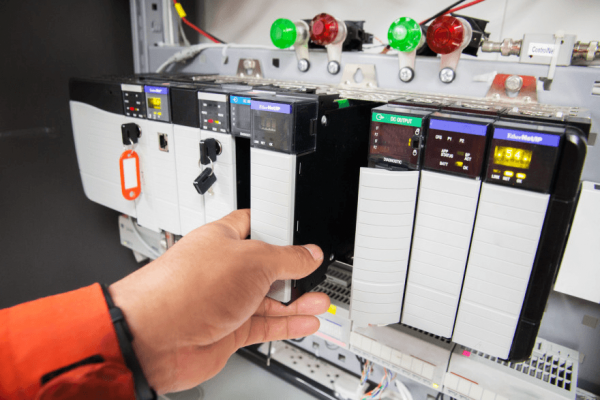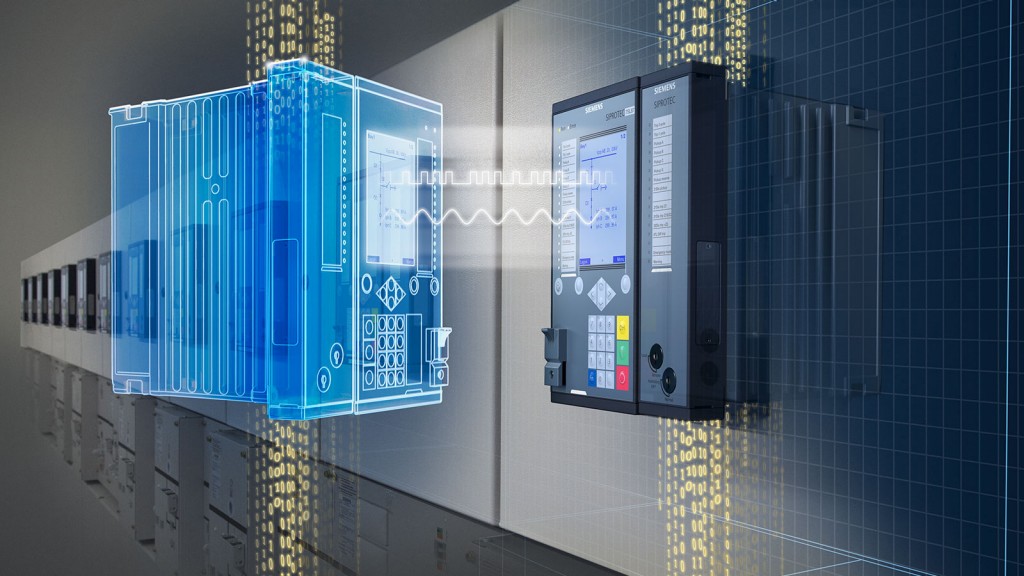Contents
PLC in Industrial Automation
Definition
A PLC is a Programmable Logic Controller. In other words, it is an industrial computer used as a standalone unit and can be used in a network of PLCs to automatically control a process or perform a specific function. To take information from the outside world such as temperature of a liquid, level in a tank, speed of an object etc, PLC in industrial automation uses different forms of connected sensors. Future of industrial automation would be great if automation people use PLC to control processes. However, the real world signals are transformed into electrical signals by the external sensors and relayed to the PLC that turn processes the electrical signals and uses them to complete its pre-programmed task.
Introduction
PLCs are used in various places and many of the previous automation processes have been upgraded. This upgraded automation has more flexibility and is simple to alter also. This in turn lends itself to have a more efficient and portable process. On the other hand, PLCs come in various varieties. The sensors connected to the PLCs are smarter than in earlier years. PLC has a great impact on future of industrial automation as the name indicates; it is a programmable logic controller. We are controlling the devices using automation and using PLC programs can be logically done. PLC is mainly designed for multiple input and output arrangements and it can withstand extreme temperatures with resistance to vibration and impact.
Let us understand the following topics in future of industrial automation article:
- Latest trends in industrial automation
- Scope of plc programming
- Future scope of industrial automation
- Latest plc technology
- New technology in industrial automation
Latest trends of PLC in Industrial Automation
Latest trends in industrial automation include increased use of analytics, growing use of PLCs, PACs, and increased cloud-based supervisory control and data acquisition (SCADA) systems. These trends will influence the industrial automation control market, according to a report. The report also predicts that these trends will also result in an eight percent compound annual growth rate (CAGR) for the Asia-Pacific region, but the trends are likely to be seen globally. Automation industry is moving towards a future of unparalleled productivity spurred by superior energy efficiency, better design and operator visualization, and rigorous safety standards.
Scope of PLC Programming
PLCs are continuously growing and evolving to be the best option for a variety of industrial automation applications. Scope of plc programming is increasing rapidly because of greater programming flexibility and ease, scalability, more memory, smaller sizes, very high-speed (gigabit) Ethernet, and built-in wireless features. PLCs are getting benefits from USB technology and thus make it easier than ever before to get online, program, and monitor your control systems. PLC programming will evolve, and with the availability of smaller micro and mini USB connectors, you can expect to see this option on more of the smaller PLCs. In the future, PLCs will continuously evolve while adapting technology enhancements in communications, hardware, and software.

Future scope of industrial automation
Future scope of industrial automation would be good enough as every technology is involved with automation techniques. It is the use of various control devices such as PC’s, DCs, and PLCs to control various operations of an industry without significant intervention from humans and to provide automatic control performance. In industries, there would be a set of technologies that are implemented to get the desired performance or output, making the automation systems most essential for industries. On the other hand, industrial automation involves usage of advanced control strategies such as cascade controls, control hardware devices and other instruments for sensing the control variables etc.
Latest PLC technology
Latest PLC technology helps to monitor and control distributed server/multi user applications. It also provides a comprehensive and accurate picture of operations, meeting the demands of multiple stakeholders. That includes maintenance, engineering, operations, and production information technology (IT). Reliable and robust functionalities can be obtained using the latest technologies of PLC. These technologies enable you to take advantage of visualization, mobility and other new technologies, meeting various challenges in process, discrete applications and delivering critical visibility when you need it.

New technology of PLC in industrial automation
New technology in industrial automation is the driver of progress for companies. From the conception to the introduction of the collaborative robots, we have seen a major change in the technological developments continuously shape the industrial automation landscape. These new technologies in automation industry will shape industry in the year ahead. However, global automation industry has been progressing and enhancing functionalities. Risk to security has enhanced interest in open-source software maintained by an active community eager to fix errors.
Conclusion
Future of PLC in industrial automation has been rising since 1947 and most of the industries including automation are using PLCs and install control systems to reduce the manual labour and improve the precision and efficiency. PLCs are very popular because of their precision.
Source: Plant Automation


 Tiếng Việt
Tiếng Việt